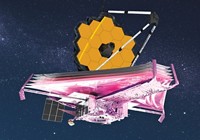Advertisement
Grab your lab coat. Let's get started
Welcome!
Welcome!
Create an account below to get 6 C&EN articles per month, receive newsletters and more - all free.
It seems this is your first time logging in online. Please enter the following information to continue.
As an ACS member you automatically get access to this site. All we need is few more details to create your reading experience.
Not you? Sign in with a different account.
Not you? Sign in with a different account.
ERROR 1
ERROR 1
ERROR 2
ERROR 2
ERROR 2
ERROR 2
ERROR 2
Password and Confirm password must match.
If you have an ACS member number, please enter it here so we can link this account to your membership. (optional)
ERROR 2
ACS values your privacy. By submitting your information, you are gaining access to C&EN and subscribing to our weekly newsletter. We use the information you provide to make your reading experience better, and we will never sell your data to third party members.
Physical Chemistry
New Molecules Found To Form Megamasers
Astronomers discover silicon oxide and methanol molecules help fuel highly luminous, extragalactic microwave sources
by Matt Davenport
November 11, 2014

Although masers and lasers earned three of their inventors Nobel Prizes in 1964, lasers have gone on to overshadow their microwave-emitting counterparts. But naturally occurring masers, including two newly discovered ones, could help scientists learn about the properties of black holes and their surrounding galaxies, which may ultimately lead to a better understanding of dark energy.
Using the IRAM 30-meter telescope, researchers from China have discovered two new types of celestial megamasers: one formed by silicon monoxide molecules and the other fueled by methanol (Nat. Commun. 2014, DOI: 10.1038/ncomms6449). Megamasers are at least a million times more luminous than the masers found in the Milky Way. The Chinese team’s discovery nearly doubles the number of molecular species known to make megamasers.
Microwave amplification by stimulated emission of radiation requires a gas cloud with a majority of its molecules in excited states, just like a laser. When external radiation strikes the cloud, it can instigate an avalanche of emission as molecules relax to lower energy levels. The frequency of the emitted radiation is a signature of the compounds that make up the maser. Prior to this study, astronomers had identified only water, hydroxide, and formaldehyde megamasers.
“The SiO and methanol megamaser emissions provide more probes of the physical conditions of their sources,” says Fred K. Y. (Fred) Lo, director emeritus of the National Radio Astronomy Observatory in Virginia, who was not involved with the study.
The molecules of astrophysical masers are pumped to excited state by astronomical events or bodies. The newfound SiO megamaser is likely being energized by the supermassive black hole at the center of its host galaxy, NGC 1068, about 50 million light-years from Earth, says Junzhi Wang, an astronomer at the Shanghai Astronomical Observatory of the Chinese Academy of Sciences, who led the study.
But the team isn’t sure what’s powering the methanol mega-maser, Wang says. Researchers say that these microwave sources will need to be observed at higher resolution to identify what’s driving them.
“The yet-to-be-understood, precise source of these megamaser emissions is intriguing,” Lo says.





Join the conversation
Contact the reporter
Submit a Letter to the Editor for publication
Engage with us on Twitter